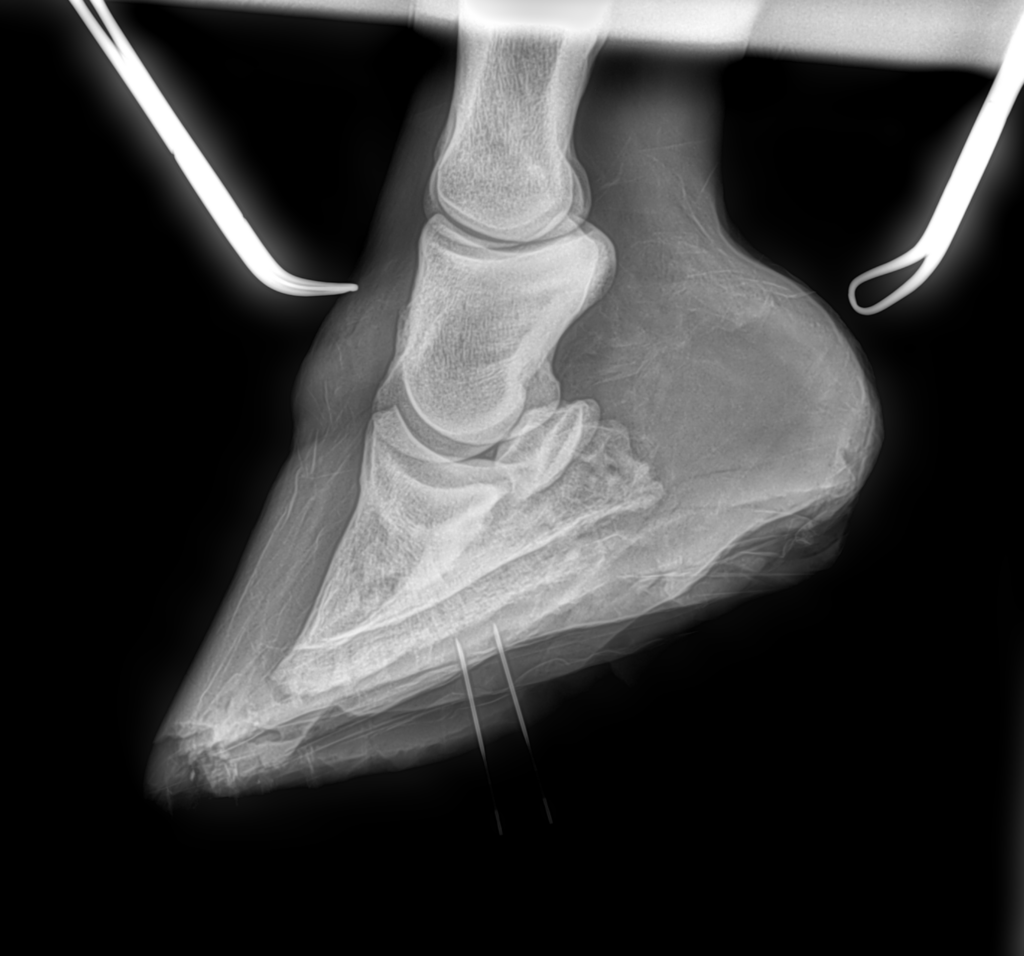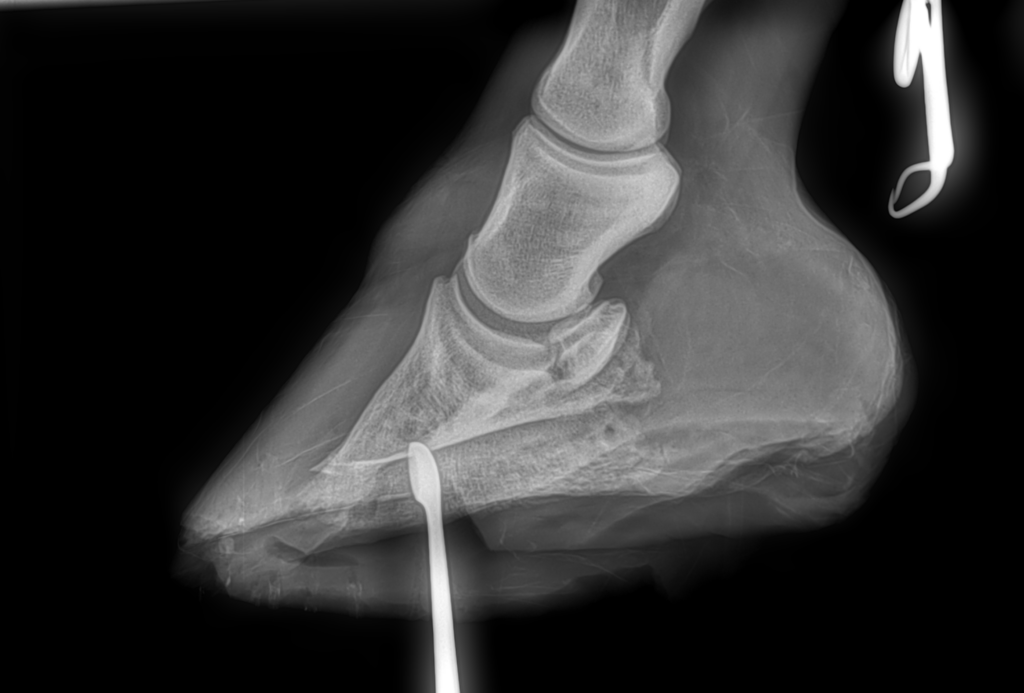Month: September 2015
Q&A with Dr. Bryan Dubynsky

Get to Know Dr. Dubynsky
Q. Where did you grow up and what is your background with horses?
A. I grew up in Northern Indiana on a horse farm. I was fortunate enough to breed, show in the Midwest circuit, and train our horses.
Q. When and why did you decide that you wanted to become a veterinarian?
A. My father is a physician and I’ve always grown up with an interest in medicine. Choosing to become a veterinarian seemed to be a natural fit combining my love for horses and medicine.
Q. Who has been the biggest influence in your life or career? What did they teach you?
A. I spent my entire childhood from 8 to 18 years old with a third generation horse trainer from Kentucky. He taught me horsemanship and patience of which are two crucial foundations for successfully working around horses every day.
Q. What is your specialty/main focus as a veterinarian?
A. My main focus and interest is sport horse medicine. I love focusing on improving athletic performance and treating horse-related injuries to help clients get their equine partners back to the top!
Q. When did you join Palm Beach Equine Clinic and what do you like about working there?
A. I joined Palm Beach Equine Clinic in 2009. I love working here for the exceptional medical and surgical capabilities and experiences available. I also love the camaraderie of all the employees; we really work as a team! Teamwork is paramount for making the clinic successful.
Q. What is some advice that you would give someone who wants to become a veterinarian?
A. Pick out the top people in the industry and work with them. Learn as much as you possibly can from the people who have been practicing for a long time.
Q. What are some of your other hobbies or interests?
A. Polo, golf, guitar & music, hiking, seeing family and friends. Spending time with my lovely dog, Ginger.
Q. What do you love about your job?
A. I love the opportunities to travel all over the country and Europe to see really cool places to work with my clients. I love working with the competition horses and the atmosphere of high-level competition, as well as caring for the sweet trail horses at home.
Q. What is one of the most interesting cases you have worked on?
A. My horse Batman. He was an abandoned polo pony suffering from West Nile Virus. He was paralyzed for three days and no one wanted to treat him. We treated him with intensive care for three days and used a tractor as a last ditch effort to get him to stand. He has since made a full recovery and is currently playing polo.
The 2015 Pan American Games were held in Toronto, Ontario showcasing exciting equestrian competition in the disciplines of show jumping, dressage and eventing. Countries from North, South and Central America, as well as the Caribbean, fielded teams for the prestigious event which served to secure qualifications for the 2016 Olympic Games in Rio de Janeiro, Brazil. Palm Beach Equine Clinic was proud to have two of its finest sport horse veterinarians in the middle of the action, providing veterinary support to the world’s elite horses.
Palm Beach Equine Clinic’s Dr. Jorge Gomez was in attendance at the Pan American Games to care for many of his competing clients throughout the event. Dr. Gomez is not only a top sport horse practitioner but is also a board-certified surgeon. Dr. Natalia Novoa was also one of the treating veterinarians at the Games, where she provided conventional veterinary services as well as alternative medicine including chiropractic adjustments and acupuncture for many of the equine stars.
Drs. Gomez and Novoa were witness to great sport and tremendous results during their time in Toronto. The show jumping portion of the Games was held July 18-25, awarding medals for individual and team events. Both veterinarians were fortunate enough to watch the Canadian Show Jumping Team win gold. Argentina went home with the silver medal and the United States earned bronze. They also proudly watched several of their own clients earn top finishes in the individual competition. McLain Ward (USA), Andres Rodriguez (VEN), and Lauren Hough (USA) earned the gold, silver and bronze medals respectively.

There is a great deal of work that is vital to maintaining a world class performance horse in peak condition for an event such as the Pan American Games. Dr. Gomez was selected to be the Team Veterinarian for Venezuela and Guatemala. Dr. Gomez teamed up with Dr. Novoa to provide veterinary support for silver medal winner Darlon van Groenhove with Andres Rodriguez (VEN) and sixth place finisher Hardrock Z ridden by Emanuel Andrade (VEN). Dr. Novoa was honored to work with and care for many of the event’s most successful horses, including Canada’s Tripple X III (Tiffany Foster) and Coco Bongo (Eric Lamaze), Argentina’s Abunola (Luis Pedro Biraben) and Cannavara 9 (Matias Albarracin), and Venezuela’s Darlon van Groenhove (Andres Rodriguez), as well as Hardrock Z (Emanuel Andrade).
“Such success is attained with the contributions of a number of people, including the riders, trainers, owners, grooms, veterinarians, farriers and other support personnel, and I wish to take this opportunity to congratulate each and every person involved,” Dr. Novoa stated. “It is my honor and pleasure to provide veterinary care to such top caliber horses. It is truly exciting to watch these athletes compete at the highest level, earning personal bests, such as Andres Rodriguez winning the Individual Silver Medal for Venezuela! Good luck to everyone in the preparations for the Olympic Games in Rio in 2016!”
Palm Beach Equine Clinic, an industry leader in sport horse veterinary care, features a renowned list of veterinarians who are experts in their respective fields, and available to provide services to clientele throughout North America and around the world in the various horse sport disciplines.
A 12-year-old show jumper is moving nicely just 2 months after laboring to walk.
Palm Beach Equine Clinic Staff Surgeon Dr. Weston Davis operated on a severe lameness case on July 5 that had quickly progressed into an emergency situation.
Evaluation and Diagnosis
Annabelle was referred to Palm Beach Equine Clinic for advanced imaging and evaluation of severe subsolar abscessation in the Holsteiner mare’s left front foot that was not responding to aggressive therapies.
She was diagnosed with infectious pedal osteitis in the left fore and early stages of support limb laminitis in the right fore. Pedal osteitis is an infection of the coffin bone. Annabelle previously showed in the Adult Jumpers with her owner, Jennifer Knobel, but the infection had advanced to the point that she could barely walk.
Local veterinarian Dr. Kim Snyder vigorously managed Anabelle’s foot condition in the field before referring the case to Palm Beach Equine Clinic. She performed digital radiographs at the farm, but they failed to adequately define the lesion. She requested an MRI study of the foot to more accurately image the underlying causes of the persistent foot abscess, such as a foreign body, bone infection, sequestrum, or tumor.
Advanced Medical Imaging Technology
 As the radiographs were not definitive enough alone, the team at Palm Beach Equine Clinic used their state-of-the-art MRI technology for a more detailed analysis. The MRI showed excess fluid and severe inflammation within the coffin bone. The infectious pedal osteitis had caused the bottom of the coffin bone to begin to deteriorate. Worsening the situation, Annabelle was reluctant to bear weight on her left foot. Then she developed mild laminitis in her right foot due to the increased load on the supporting limb to relieve pressure. The development of support limb laminitis determined the emergency status of the left fore lameness as laminitis could be a fatal complication.
As the radiographs were not definitive enough alone, the team at Palm Beach Equine Clinic used their state-of-the-art MRI technology for a more detailed analysis. The MRI showed excess fluid and severe inflammation within the coffin bone. The infectious pedal osteitis had caused the bottom of the coffin bone to begin to deteriorate. Worsening the situation, Annabelle was reluctant to bear weight on her left foot. Then she developed mild laminitis in her right foot due to the increased load on the supporting limb to relieve pressure. The development of support limb laminitis determined the emergency status of the left fore lameness as laminitis could be a fatal complication.
Dr. Davis and the team at Palm Beach Equine Clinic took immediate action using the MRI scans for accurate surgical mapping. The MRI study documented exactly where the infectious pedal osteitis was located. This mapped position was used in comparison to the previously taken radiographs. Both imaging modalities were used intra-operatively to guide Dr. Davis precisely to the area of infected bone.
Surgery and Recovery
Annabelle was placed under general anesthesia, and the left front limb was prepared for surgery. A 5 cm long x 3 cm wide window was cut through the sole down to the surface of the coffin bone, through which the necrotic (infected) bony tissue was removed. Prior to recovery, the surgical site was packed with antibiotic powder and a full distal limb bandage was applied. Additional support of Soft-Ride boots and sole supports were positioned. Medical grade maggots were applied to the foot the day after surgery to safeguard absolute full debridement of all necrotic/infected tissues.


 Annabelle was placed on a range of antibiotics. Pain was managed with local nerve blocks and anti-inflammatory medications. Her pain improved rapidly in the operated left limb and signs of laminitis in the right fore resolved as well. During her stall rest recovery, the foot was soaked routinely in Epsom salts. Betadine soaked gauze was applied over the frog and surgery site each day and the hoof was wrapped for protection.
Annabelle was placed on a range of antibiotics. Pain was managed with local nerve blocks and anti-inflammatory medications. Her pain improved rapidly in the operated left limb and signs of laminitis in the right fore resolved as well. During her stall rest recovery, the foot was soaked routinely in Epsom salts. Betadine soaked gauze was applied over the frog and surgery site each day and the hoof was wrapped for protection.
Snyder continued to care for Annabelle in the post-op period. Synder’s husband and farrier, Jim Gilchrist, applied a shoe with a treatment plate to protect the bottom of the foot. This allowed for routine access by removal of three simple screws.
The initial cause of the abscess or why the infectious pedal osteitis progressed so aggressively is still unclear. Dr. Davis speculates that it was possibly a spontaneous abscess and for whatever reason, whether the depth into the foot or the presence of a highly infectious bacteria, Annabelle was just unlucky. Instead of draining like a “normal” abscess, this particular case established an infection within the bone. This made it impossible to clear the infection with even the most aggressive medical therapies apart from surgical removal.
 Annabelle’s infectious pedal osteitis has cleared and her hoof is healing well. Now she is walking sound and has a favorable prognosis for further improvement with hopes of eventually return to work.
Annabelle’s infectious pedal osteitis has cleared and her hoof is healing well. Now she is walking sound and has a favorable prognosis for further improvement with hopes of eventually return to work.